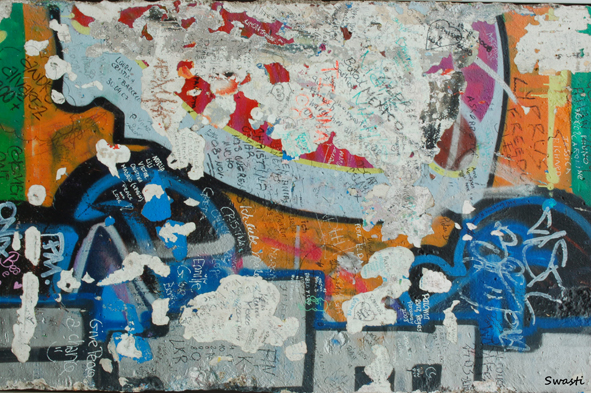 |
 |
 |
|
RAYCHAUDHURI LAB @ CSIR-CCMB, Hyderabad |
 |
 |
 |
|
|
 |
 |
 |
 |
 |
 |
 |
 |
 |
 |
 |
| |
Publications from CSIR-CCMB
- Study research protocol for Phenome India-CSIR Health Cohort Knowledgebase: A prospective multi-modal follow-up study on a nationwide employee cohort. Shantanu Sengupta; Phenome India Consortium. Biol Methods Protoc. 2025. 11;10(1):bpaf061
- Dual-specific autophosphorylation of kinase IKK2 enables phosphorylation of substrate IκBα through a phosphoenzyme intermediate. Borar P, Biswas T, Chaudhuri A, Rao TP, Raychaudhuri S, Huxford T, Chakrabarti S, Ghosh G, Polley S. Elife. 2025. 30;13:RP98009
- Kingdom-specific lipid unsaturation calibrates sequence evolution in membrane arm subunits of eukaryotic respiratory complexes. Gupta P, Chakroborty S, Rathod AK, Kumar RK, Bhat S, Ghosh S, Rao PT, Yele K, Raman B, Nagaraj R, Manna M, Raychaudhuri S. Nature Communications. 2025. 16:2044
- Cell membrane proteome analysis in HEK293T cells challenged with a-Synuclein amyloids. Vaish H, Mansuri S, Jain A, Raychaudhuri S. J Biosciences. 2024. 49:71
- TEX13B is essential for metabolic reprogramming during germ cell differentiation. Kumar U, Sudhakar DVS, Kumar N, Moitra A, Kale HT, Jha RK, Rawat S, Verma G, Gupta NJ, Deenadayal M, Deenadayal Tolani A, Raychaudhuri S, Chandra Shekar P, Thangaraj K. Human Reproduction. 2024. deae094. doi: 10.1093/humrep/deae094
- Widespread Nuclear Lamina injuries defeat proteostatic purposes of a-Synuclein amyloid Inclusions. Mansuri S, Jain A, Singh R, Rawat S, Mondal D, Raychaudhuri S. J Cell Sci. 2024. 137(7):jcs261935
- Rapid and deep plasma proteomics workflows for robust identification and quantification of biomarkers of sickle cell anaemia. Polepalli S, Singh R, Naskar S, SKDB Punyasri P, Ranjith Kumar K, Yele K, Krishnakumari V, Bakthisaran R, Jain D, Chandak GR & Raychaudhuri S. J Proteins Proteom. 2022. 13, 205 218
- Stress responses elicited by misfolded proteins targeted to mitochondria. Narayana Rao KB, Pandey P, Sarkar R, Ghosh A, Mansuri S, Ali M, Majumder P, Ranjith Kumar K, Ray A, Raychaudhuri S, Mapa K. J Mol Biol. 2022. 434(12):167618
- Increased supraorganization of respiratory complexes is a dynamic multistep remodelling in response to proteostasis stress. Rawat S, Ghosh S, Mondal D, Anusha V, Raychaudhuri S. J Cell Sci. 2020. 133(18): jcs248492
- Cytoplasmic sequestration of the RhoA effector mDiaphanous1 by Prohibitin2 promotes muscle differentiation.Saleh A, Subramaniam G, Raychaudhuri S, Dhawan J. Scientific Reports. 2019. 9(1):8302. doi: 10.1038/s41598-019-44749-4
- Aggregation of Respiratory Complex Subunits Marks the Onset of Proteotoxicity in Proteasome Inhibited Cells.Rawat S, Anusha V, Jha M, Sreedurgalakshmi K, Raychaudhuri S. J Mol Biol.. 2019. pii: S0022-2836(19)30031-2. doi: 10.1016/j.jmb.2019.01.022.
- Identification of a splice variant of optineurin which is defective in autophagy and phosphorylation Moharir SC, Bansal M, Ramachandran G, Ramaswamy R, Rawat S, Raychaudhuri S, Swarup G. Biochim Biophys Acta Mol Cell Res.. 2018; 1865(11 Pt A):1526-1538
- Conserved C-terminal nascent peptide binding domain of HYPK facilitates its chaperone-like activity. Raychaudhuri S, Banerjee R, Mukhopadhyay S, Bhattacharyya NP. Journal of Biosciences. 2014; 39(4): 1 14.[DOI 10.1007/s12038-014-9442-z] *Corresponding author.
Publications from SR
- Interplay of Acetyltransferase EP300 and the Proteasome System in Regulating Heat Shock Transcription Factor 1. Raychaudhuri S, Loew C, Koerner R, Pinkert S, Theis M, Hayer-Hartl M, Buchholz F, Hartl FU. Cell. 2014; 156: 975-985.
- Firefly luciferase mutants as sensors of proteome stress. Gupta R, Kasturi P, Bracher A, Loew C, Zheng M, Villella A, Garza D, Hartl FU, Raychaudhuri S*. Nature Methods. 2011; 8(10):879-84. PMID: 21892152. *Corresponding author.
- Protein Folding in the Cytoplasm and the Heat Shock Response. Vabulas M, Raychaudhuri S, Hayer-Hartl M, Hartl FU. Cold Spring Harb Perspect Biol. 2010; 2(12):a004390. PMID: 21123396
- Identification of HYPK interacting proteins reveals involvement of HYPK in regulating cell growth, cell cycle, unfolded protein response and cell death. Roy Choudhury K, Raychaudhuri S, Bhattacharyya NP. PLoS One. 2012; 7(12): e51415.
- Spectroscopic studies reveal the mode of variation in the residual structure of an intrinsically unstructured protein HYPK. Raychaudhuri S, Roy Choudhury K, Palchoudhuri S, Chopra S, Bhattacharyya NP, Mukhopadhyay D. J Biophysical Chemistry. 2011; 2 (4), 434-442.
- The role of intrinsically unstructured proteins in neurodegenerative diseases. Raychaudhuri S, Dey S, Bhattacharyya NP, Mukhopadhyay D. PLoS One. 2009; 4(5):e5566. PMID: 19440375
- Huntingtin interacting protein HYPK is intrinsically unstructured. Raychaudhuri S, Majumder P, Sarkar S, Giri K, Mukhopadhyay D, Bhattacharyya NP. Proteins. 2008; 71(4):1686-98.PMID: 18076027
- HYPK, a Huntingtin interacting protein, reduces aggregates and apoptosis induced by N-terminal Huntingtin with 40 glutamines in Neuro2a cells and exhibits chaperone-like activity. Raychaudhuri S, Sinha M, Mukhopadhyay D, Bhattacharyya NP. Hum Mol Genet. 2008;17(2):240-55. PMID: 17947297 **Recommended by F1000 Biology.
- Increased caspase-2, calpain activations and decreased mitochondrial complex II activity in cells expressing exogenous huntingtin exon 1 containing CAG repeat in the pathogenic range. Majumder P, Raychaudhuri S, Chattopadhyay B, Bhattacharyya NP. Cell Mol Neurobiol. 2007; 27(8):1127-45. PMID: 17902043
|
|
|
 |
 |
 |
 |
 |
 |
 |
 |
 |
 |
 |
 |
Copyright (C) 2014, Swasti Raychaudhuri. All rights reserved. |
 |
 |
 |
 |
|